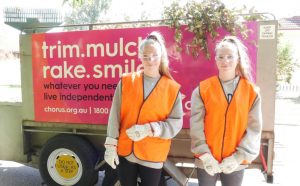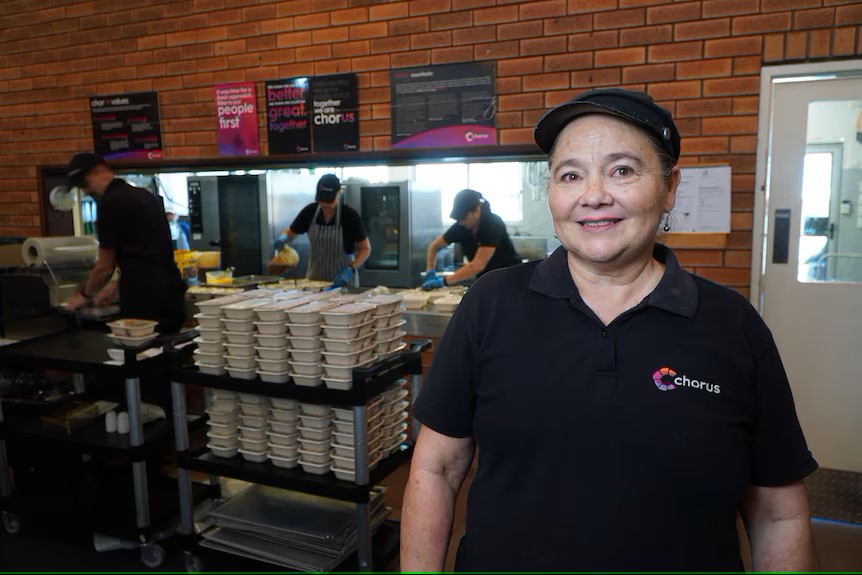The motivations for becoming a volunteer can be completely different, depending on who you ask. For some, it’s as simple as wanting to contribute to the lives of others and the community. For others, it may be to improve their resume and job opportunities in the future. While each volunteer may have a particular motive that drew them to sign up, their reasons for continuing their generous donation of time and skill can evolve as their experiences do.
Our primary aim as a volunteer organisation is to support the community and provide in-home care for the people of WA. We also extend that care to our volunteers, ensuring that we are supporting their needs and seeing that their volunteering goals are met. Through a collaborative research study, Chorus partnered with Curtin University of Technology to study volunteering trends of 2019. The differences between older adults and younger adults was a surprising result of the study; whereby, we began to see patterns emerging between the age of the volunteers and their motivations. This knowledge can be vital in developing successful recruitment strategies that really get to the heart of why people commit their time to volunteer work.
What’s driving older adults to volunteer?
 Through this study we found that older adults are primarily driven to volunteer with altruistic motives at the forefront. They’re looking to give back to the community in service and support.
Through this study we found that older adults are primarily driven to volunteer with altruistic motives at the forefront. They’re looking to give back to the community in service and support.
There is also an element of socialising and being needed that sparks the interest of older adults. These volunteers (or future volunteers) want to use the skills they have acquired throughout their lives and have them be needed. With this characteristic in mind, older adults would be far more willing to volunteer if they were asked to contribute their knowledge, education, or specific skills rather than just being asked to volunteer on a general level.
Key points Older adults are more willing to volunteer if their specific education or work history is needed. Incentives like mileage or shopping discounts will also help them to jump on board.
Strategies for recruiting older adults
Now that we know what older adults are looking for in their volunteering efforts, we can tailor our recruitment strategies to align with their needs.
Tip #1 Make it known that their knowledge and skills are needed! While you can’t create a specific ad for each volunteer, you can make sure your marketing material communicates how older adults can use their education, work history, and life experiences to help others.
Tip #2 Detail the volunteering opportunities available and encourage people to think about how their skills can be used because “you are needed.”
Tip #3 Make sure that volunteers and future volunteers know about any reimbursements or incentives you offer. Chorus currently offers volunteers mileage and entertainment reimbursements which older adult volunteers really respond to.
Tip #4 If you’re able to, advertise volunteering roles as flexible and considerate of availability. This generation of volunteers are healthier and more active than previous generations. They often have a lot of commitments in their life, so time constraints can be a barrier.
What about the younger volunteers?

The Chorus and Curtin University Volunteering Trends Study found that younger adults are not always aware of the volunteering opportunities available. They are also busy, busy, busy and (as we’re sure you already know), they’re very digitally savvy and like to be communicated with via these digital platforms. For those under 24, online recruitment is particularly favoured.
When it comes to their motivations, younger volunteers are primarily driven by career benefits. They know that volunteering will boost their overall employability so they’re willing to give their time for the view that it will help their career progression. Social interaction was the next highest motivation reported by younger volunteers. And virtual volunteering is becoming more attractive to this group of future volunteers!
- Key point: It’s time to get digital! Engagement and inclusion via digital platforms are becoming more and more important to youths and younger adults.
Strategies for recruiting younger adults
With career opportunities and socialising at the forefront of their volunteering motivations, these tips can help you to capture the attention of younger people and bring them on board.

Tip #1 Your marketing material needs to highlight the career benefits and socialising opportunities within a certain volunteering position. We found that storytelling also works well for this audience, so use anecdotes and quotes from other younger volunteers in your advertising.
Tip #2 Increase awareness by having a presence in places that younger adults frequent: universities, sporting clubs, TAFE institutions, and schools.
Tip #3 Go online to advertise: GoVolunteer and Seek are great places to start. Include digital volunteering opportunities if you have them available.
Tip #4 With their busy study, work, and socialising schedules, young adults are more likely to volunteer if there is flexibility in the role. Let them know that you are considerate of time restraints and can work around their busy schedules.
Chorus and Curtin University of Technology
At Chorus, we believe that knowledge has the power to drive change. By completing the Volunteering Trends Study with Curtin, we have been able to gain invaluable knowledge on volunteering in Western Australia that is useable today. Often it can be easier to look to examples from abroad or from across different industry streams to develop recruitment strategies; however, nothing compares to research that has been designed for your needs. This study is all about gaining local knowledge that has been able to shape our volunteer recruitment, engagement, and retention strategies.
To learn more about the Chorus and Curtin University of Technology Volunteering Trends click here to read the full study
For more information on volunteering with Chorus visit our Volunteering page here or email volunteering@chorus.org.au



